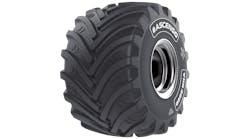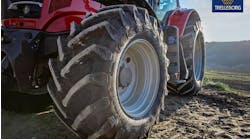There are numerous things to keep in mind when repairing commercial medium truck tires, say tire repair experts.
The most important is strict adherence to industry-recommended procedures, says Robbie Bushnell, vice president of tire repair products at 31 Inc. “These tires are carrying heavy loads, so it is vital to repair (them) correctly.”
Knowing injury limitations is another critical aspect of truck tire repair, says Mike Frail, technical sales director at Rema Tip Top North America.
“A certified technician should know and understand that there are maximum injury limitations when it comes to repairing commercial truck tires — up to 3/8-inch max injury within the tread/crown area only,” he explains.
“If the injury surpasses the maximum injury measurements, that tire should be removed from service and sent to a certified section repair shop.”
“The next thing to consider is proper preparation of the injury,” says Brent Klomparens, senior director of customer experience, Americas, at Technical Rubber Co. Inc.
“For all puncture repairs, the tire must be demounted from the wheel so that a proper inspection of both the inside and outside of the tire may be performed.
"The injury should always be drilled from both the inside and outside of the tire in order to remove all damaged material.”
Mistakes to avoid
Repairing the tire without first cleaning its inner liner is an easily avoidable mistake, according to Bushnell, who add lack of cleaning “will cause reduced adhesion due to silicones, mold lubricants, etc., that are on the liner.
“Not filling the injury channel with a suitable vulcanizing rubber stem” is another error that should be avoided. Filling the channel with a proper stem “is critical in maintaining the integrity of the casing to allow it to be retreaded and extending the casing’s life,” says Bushnell.
Technicians also should avoid applying a repair before the cement has completely dried. “Technicians can be in a hurry and not allowing the cement to dry (shows) a lack of training,” explains Bushnell.
Klomparens agrees that “some technicians, in an effort to speed up the repair process, will not allow vulcanizing cement to dry completely,” which he says “will result in wet solvent being trapped underneath the repair unit.
“As this wet solvent continues to dry underneath the repair, it will result in air bubbles developing, which prevents the repair unit from making full contact with the inner liner.
"As the tire rolls down the road and generates heat, these air bubbles will increase in size and potentially create large enough gaps between the repair unit and the inner liner to cause the repair to fail.”
Rema Tip Top’s Frail also urges technicians to take their time when repairing medium truck tires.
Ensuring tools and materials are in top working order is also paramount, according to Frail.
“In some instances, technicians are rushed through the field repair process and often skip steps or just don’t have the materials available to perform a proper industry repair.
"Both materials and tools (can be) found to be missing, worn-out, broken, contaminated, not available or non-accessible.
“Keeping tools sharp, cleaned and maintained for peak performance is essential when it comes to tire repair,” says Frail. “Worn tools need to be replaced when your buffing texture is not where it should be or if the injury channel is not cleaned out properly after using a dull carbide cutter."
He emphasizes that “repair procedures and the step-by-step process must be followed” in all instances.
“Education and certification are crucial for all tire technicians.”





